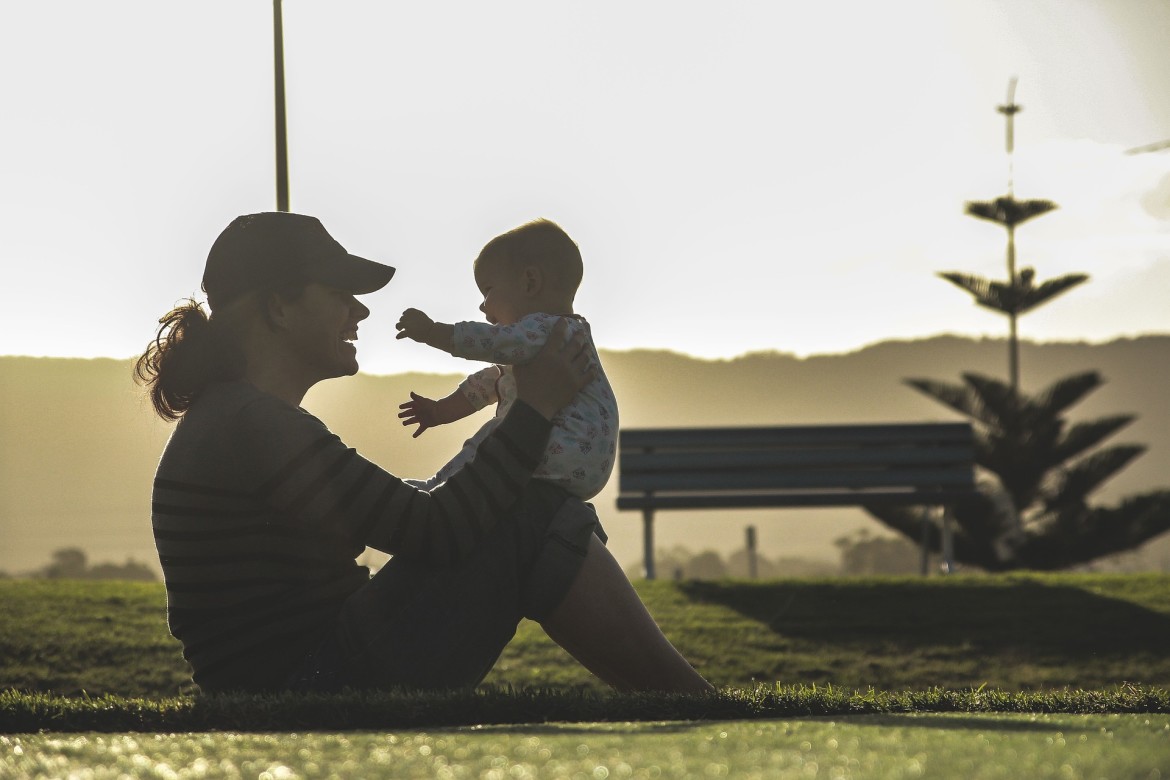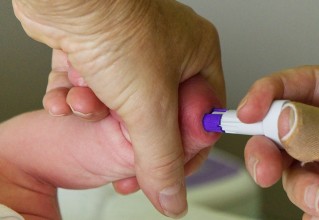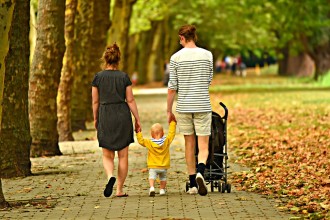Episode Review: Babies - Love
03 Sep, 2020The Biology of Bonding
In the early 1990s, scientists didn’t have a good understanding of how the bonding between mother and baby develops. When Ruth Feldman, Director of the Centre of Developmental Social Neuroscience had her first baby at 22, and she was overwhelmed by the deep love she had for her daughter, she became curious about the biology of bonding. She came across several scientific papers that discuss the importance of oxytocin in bonding in mammals and so she was curious if it played the same role with human parents and children.
In 2001, they started recruited 80 mothers with babies who were 1 month old and they took samples of their saliva throughout pregnancy and in the first month after childbirth. What they found was that oxytocin levels in mothers rises during pregnancy and stays high throughout pregnancy and right after childbirth. They also found that when mothers and infants touch each other a lot, the oxytocin levels in both increased, giving a sense of reward, and this makes you want to engage with the baby even more. The higher the levels of oxytocin the mother had, the more she bonded with her infant.
In the next study, she looked at the oxytocin levels in fathers and found similar results. In the first month right after the baby’s birth, both mothers and fathers had identical levels of oxytocin. While mothers get a surge of oxytocin during pregnancy, childbirth and nursing, what they found was that fathers got more oxytocin the more involved they were with their baby. Fathers who bathed their baby, fed it, burped it, walked it when it was crying – really engaged in the parental role – had more oxytocin activated in their bodies. Through this its clear that fatherhood is as deep as motherhood.
Through one of their studies however, they found that the surge of oxytocin at birth in mothers activates a very primitive part of the brain – the amygdala. It is the part of the brain that makes us vigilant and worry about the infant – the part of the brain that makes us wake up at night when the baby cries. While the amygdala was activated in both mothers and fathers, scans of parents’ brains found that the amygdala in fathers was about a quarter of what you see in mothers. Another study in 2010 on 48 gay couples who had adopted a baby via surrogacy and were in a partnered committed relationship living with the baby from Day 1, suggests that this ‘mother instinct’ is not gendered. They videoed their interactions and coded it and measured oxytocin levels and scanned the fathers brain and they found that when fathers are the primary caregivers, they had amygdala activation just like the mothers. While pregnancy, childbirth and nursing activate the maternal brain, it is also activated to the same extent by committed caregiving from a primary caregiver. This study has shown that it does not matter whether you are a biological parent or a mother, if you choose to be a committed primary caregiver for a child you can experience the same level of bonding as a biological mother. It shows that it is a choice to be a parent to an infant.
Reflection
This was a great episode as it confirms with biology something I learnt in my sociology degree years ago, which is that parenting is not biological. From what I learnt then (10 years ago), studies showed that children raised by gay, lesbian – non-heterosexual parents – had better emotional regulation and outcomes in education than children of heterosexual parents. This may be due to the fact that it is so hard for non-heterosexual couples to have children, and need to actively make a decision to have a child and believe that this is something they want and are ready for, whilst there are many heterosexual couples who may have a child quite by accident and may not be ready to be a parent.
I am curious however, as to what happens when both parents are very actively involved with caring for the baby? Do they both have highly activated amygdala’s and both wake at night? Is there always one parent who is more attentive than the other?
Infant-parent Relationship
Ed Tronick came to the psychology department in Harvard University in 1968 and he was very interested in the infant parent relationship. He wanted to know whether a baby is born ready to engage in social relationships or whether the baby is passive. This lead him to the development of the still face experiment where he had mothers playing with their 3 – 4 month old infants. During the experiment, he would ask the mother to stop reacting to their baby for about 2 minutes to see what the baby would do, and the babies immediately realised that their mother wasn’t reacting the way she normally did – being excited and animated and engaged. The baby would eventually cry but they would keep trying to win the mother back and get back into their relationship. Through this experiment he found that the baby is born with the capacity to engage in social interactions. This is something that is built into us and is critical to us. If that relationship gets disrupted, it has a significant effect on both baby and adult.
They then did another series of experiments taking samples of the baby’s saliva to see the level of the stress hormone cortisol – the higher the cortisol, the greater the level of stress for the infant. What they found was that even after the baby is stressed, the baby and mother will find ways to reconnect after the stress of the still faced experiment. This means that the infant is able to trust the adult to fix or repair their relationship. This experiment is reassuring for every parent who is struggling to figure out what it is their baby needs. Ed Tronick suggests that even though its hard, if you keep on trying you will figure out what they need and trust your own instincts on how to respond, and that feedback loop as you respond to their needs and they trust you, is ‘how the two of you fall in love with one another’.
Reflection
I am not a fan of these still face experiments. I wonder what the long term effect of these studies is on the child’s brain. Having said that, children are often in situations where they are not able to receive attention straight away e.g. as in the video, in the backseat of the car where a mother cannot reach behind and comfort them, or in their cot while their parent is in the shower or toilet and cant attend to them right away. So two minutes of a child crying is not a lot of time in the grand scheme of things but I cant imagine it would help to see your mother sitting still in front of you, not rushing to hold you and comfort you when you are crying, or respond and engage you when you are laughing.
Impact of parenting styles on infant brain development
The third section of this episode is with Anne Rifkin Graboi in Singapore. She discusses the impact that parenting choices or parenting style can have on the baby’s development. There was a study occurring in Singapore relating to the growing up in Singapore towards healthy outcomes study – this study took scans of babies’ brains within the first few weeks. So Anne was able to use these results as the first immediately after birth scan as the baseline of brain development. She then followed these babies up after 6 months to take another scan of their brain and also observe differences in parenting style. They brought in 20 mothers and babies at 6 months of age and they observed the parenting behaviour in the laboratory. She looked at factors like how attentive and responsive is the mother to the infants’ signals. They coded all the interactions based on if the baby cries, does the mother quickly offer comfort, if the baby is reaching for something – does she let the child choose or does she choose. These interactions are really small and sometimes they are really quick but “over time they add up to a picture of what the relationship is really like.”
Once they had documented the parenting styles, they now needed to see how these styles affected areas of the infants brain. They got the mums to feed the babies before they scanned their brains so that it would be easier if the babies were asleep, and her colleague specialising in neuroimaging processed the data. What they found was that the infants who had less responsive caregiving had hippocampi that were a bit bigger compared to infants with more responsive parenting. The hippocampus is the part of the brain that is important for learning and managing stress. What this showed was that the babies were having to manage their own stress because they were not getting as much support from their parents. Even at 6 months, these differences in parenting were linked to observable differences in the infants brain. It shows us that when a parent is attentive and responsive, the baby feels as if it is in a safe environment and it trusts that the world is safe, and it then has more time to explore its environment. But when a baby doesn’t get that same reassurance or signalling from its parent – when its cries are not responded to as promptly, or its needs interpreted and met, it may start prioritising thinking about safety and comfort – rather than exploring the world. While parenting is not easy and none of us do it perfectly, its important that the overall experience for the child is one of attentive and responsive care.
Reflection
I am curious as to what is the best way to parent to have the best outcome for a child? Anne coded things like when a baby is reaching for an object, one parenting style may grab the object for the child while the other would let the child choose. What would you do? I think I would grab the object for the baby and give it to them, but is this the right thing to do? How are these actions going to affect its perception of its environment? I wish this was clearer.
I am also curious as to how this manifests later in life in an adult brain. This study showed that maternal overprotection resulted in greater amygdala reaction in young adults to signs of interpersonal threat. How do you mother in such a way to be protective but not overprotective? None of us will ever be perfect parents but I wish there was more information on what is an appropriate response to have as a parent to typical situations so that we can at least try to do the best for our child.
https://www.sciencedirect.com/science/article/pii/S1878929319302981
In summary
Parenting is a hard job and it comes with no job description or instructions on how to perform the role. The needs of each child will be uniquely different and the way that each parent chooses how to respond to their needs will also be different resulting in many different combinations of how the parent child relationship impacts a child growing up and their relationship with the world. Its interesting to understand how parental styles and choices can impact the infant brain so early on and their temperament in how they perceive the world and life going forward, and how the bonding – and love – can shape a child’s future in a very real way.
Cover Image by thedanw from Pixabay
Get The Best Of Sleepy Roo Delivered To Your Inbox
Subscribe to my newsletter and get the latest info on baby sleep! You can unsubscribe at any time.



